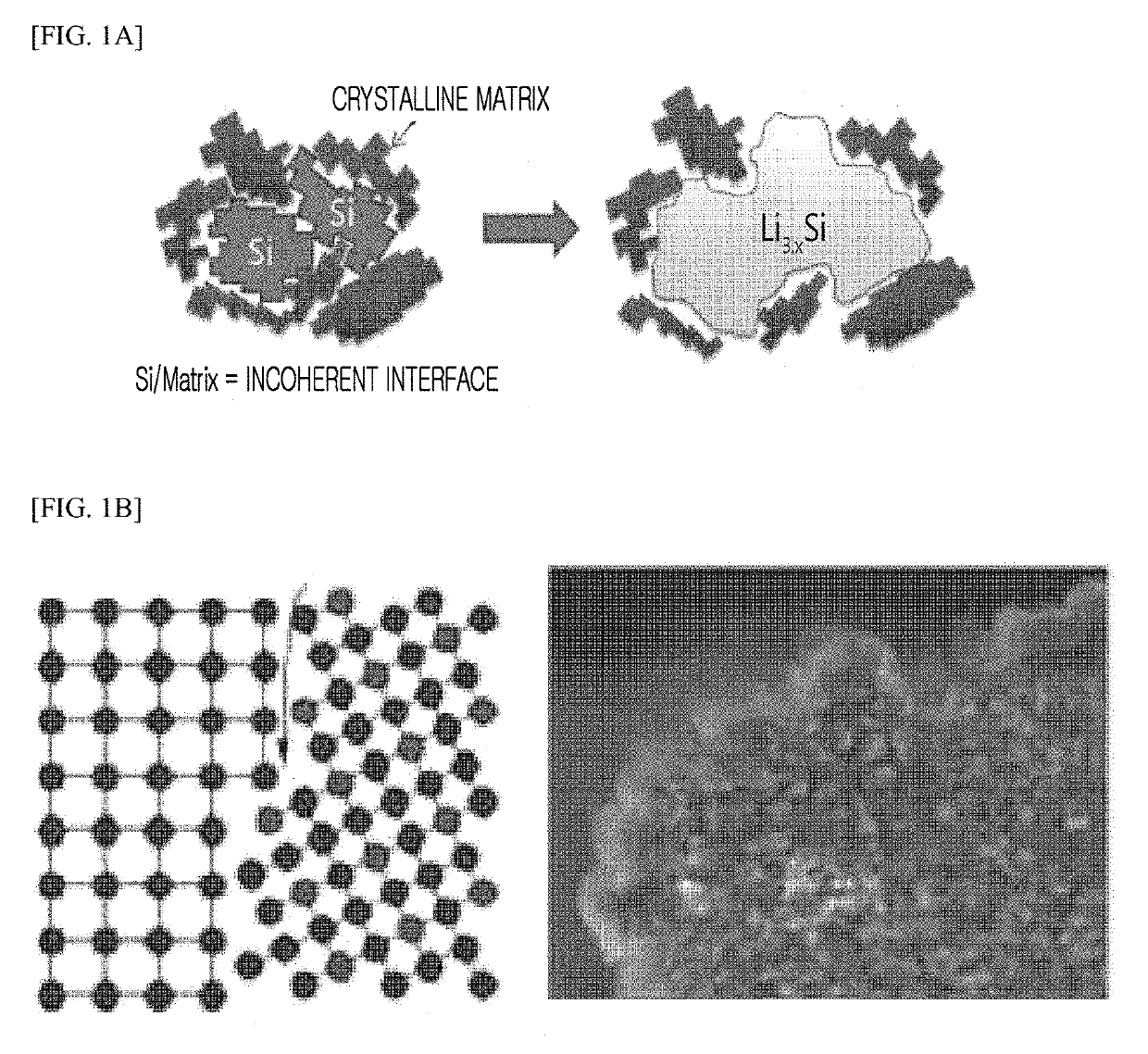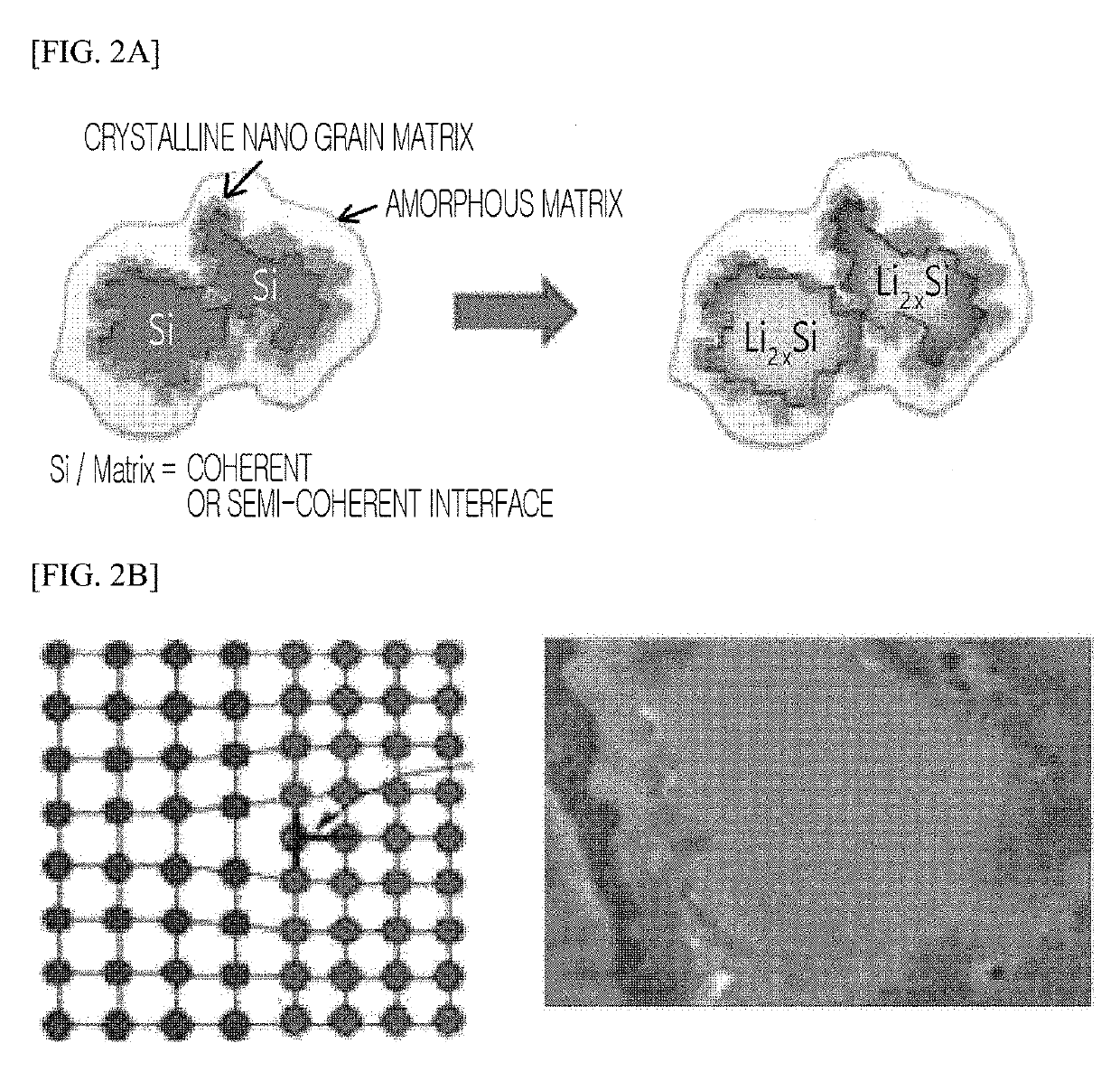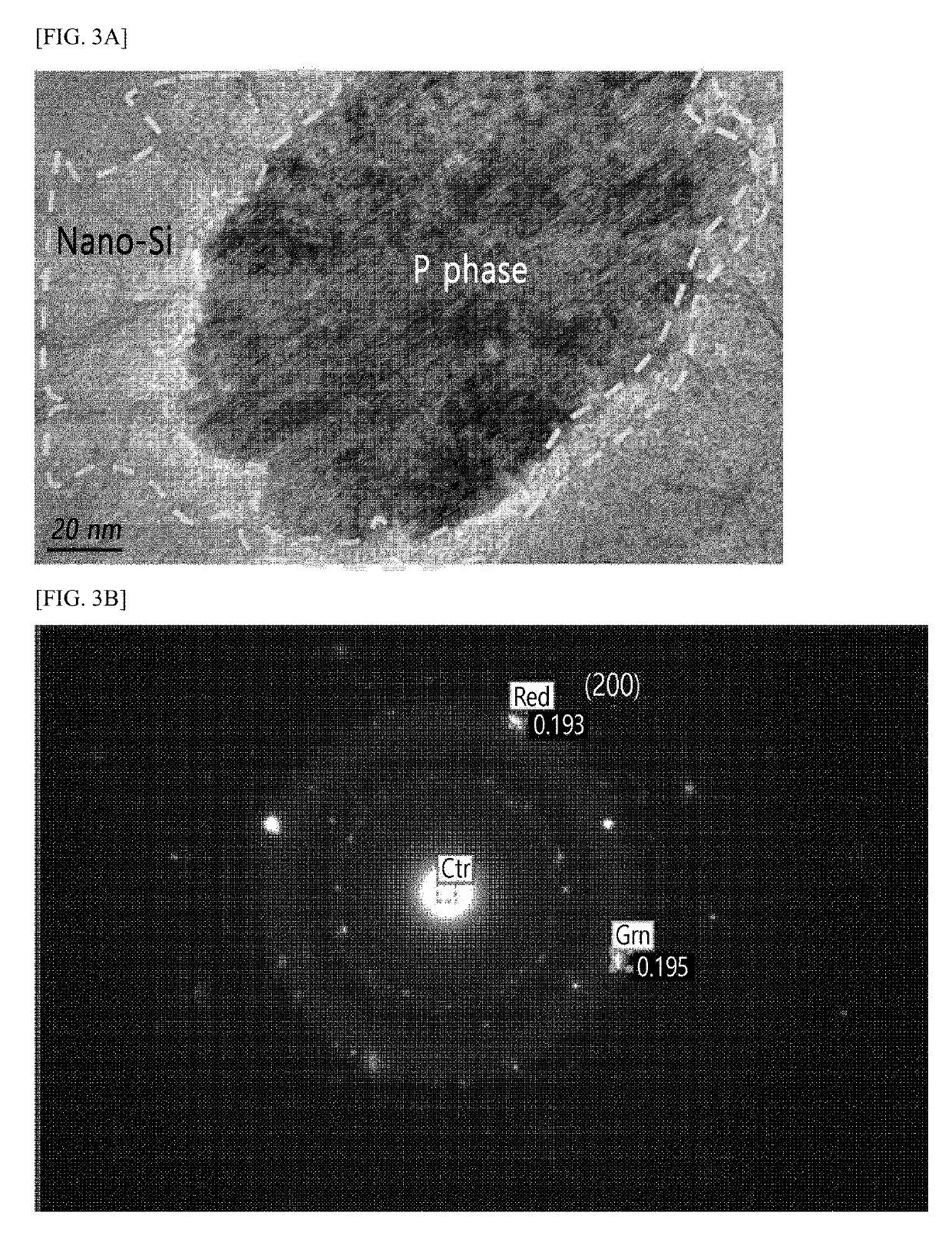Negative active material for secondary battery and secondary battery including the same
- Summary
- Abstract
- Description
- Claims
- Application Information
AI Technical Summary
Benefits of technology
Problems solved by technology
Method used
Image
Examples
experimental example 1
ic of Negative Electrode Active Material Having Three-Layer Structure Used in the Example of the Present Invention
[0185]In a silicon-based negative electrode active material used in the Example of the present invention, Si has the range of 60 to 70% based on atom % (at %), and Ti and Fe have the ranges of 9 to 14%. In the meantime, the Al has the range larger than 1% and less than 20%, preferably, the range of 5 to 19%. Most preferably, the Al has the range of 10 to 19%.
[0186]Table 3 below is a table representing composition ranges of the Examples and the Comparative Examples. In the meantime, Table 4 below represents the evaluation of the silicon-based negative electrode active materials based on the compositions of Table 3, and particularly, represents 1CY-charging / discharging amount, 1CY-efficiency, 1CY-pole plate capacity, 50CY-discharging capacity, 50CY-efficiency, 50CY-capacity maintenance rate, 50CY-expansion rate, and an amorphization degree (%) of the Examples and the Compa...
PUM
 Login to view more
Login to view more Abstract
Description
Claims
Application Information
 Login to view more
Login to view more - R&D Engineer
- R&D Manager
- IP Professional
- Industry Leading Data Capabilities
- Powerful AI technology
- Patent DNA Extraction
Browse by: Latest US Patents, China's latest patents, Technical Efficacy Thesaurus, Application Domain, Technology Topic.
© 2024 PatSnap. All rights reserved.Legal|Privacy policy|Modern Slavery Act Transparency Statement|Sitemap



